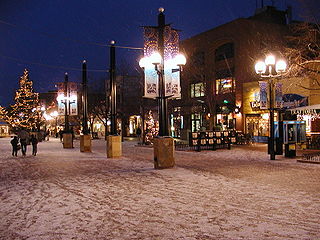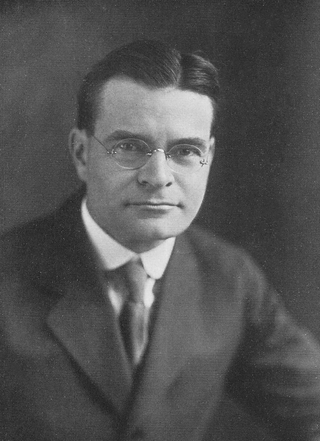
Landscape architecture is the design of outdoor areas, landmarks, and structures to achieve environmental, social-behavioural, or aesthetic outcomes. It involves the systematic design and general engineering of various structures for construction and human use, investigation of existing social, ecological, and soil conditions and processes in the landscape, and the design of other interventions that will produce desired outcomes.

A landscape architect is a person who is educated in the field of landscape architecture. The practice of landscape architecture includes: site analysis, site inventory, site planning, land planning, planting design, grading, storm water management, sustainable design, construction specification, and ensuring that all plans meet the current building codes and local and federal ordinances.

Landscape design is an independent profession and a design and art tradition, practiced by landscape designers, combining nature and culture. In contemporary practice, landscape design bridges the space between landscape architecture and garden design.

Roberto Burle Marx was a Brazilian landscape architect whose designs of parks and gardens made him world-famous. He is accredited with having introduced modernist landscape architecture to Brazil. He was known as a modern nature artist and a public urban space designer. His work had a great influence on tropical garden design in the 20th century. Water gardens were a popular theme in his work. He was deftly able to transfer traditional artistic expressions such as graphic design, tapestry and folk art into his landscape designs. He also designed fabrics, jewellery and stage sets.

Hideo Sasaki was a Japanese American landscape architect.
Michael Robert Van Valkenburgh is an American landscape architect and educator. He has worked on a wide variety of projects in the United States, Canada, Korea, and France, including public parks, college campuses, sculpture gardens, city courtyards, corporate landscapes, private gardens, and urban master plans.

Warren Henry Manning was an American landscape designer and promoter of the informal and naturalistic "wild garden" approach to garden design. In his designs, Manning emphasized pre-existing flora through a process of selective pruning to create a "spatial structure and character." An advocate for the conservation of the American landscape, Manning was a key figure in the formation of the American Society of Landscape Architects and a proponent of the National Park System.

Henry Vincent Hubbard was an American landscape architect and planner, famous for his unique teaching styles at Harvard University, and his many publications. He was one of the prime supporters for a national system of public parks.
Grant Richard Jones is an American landscape architect, poet, and founding principal of the Seattle firm Jones & Jones Architects, Landscape Architects and Planners. In more than four decades of practice, his work in ecological design has garnered widespread recognition for its broad-based and singular approach, one that is centered on giving voice to the land and its communities. Called the “poet laureate of landscape architecture” Jones's poetry informs his designs.
Edward Durell Stone Jr. was an American landscape architect.
Don W. Vaughan L.L.D. is an American landscape architect based in Vancouver, British Columbia, Canada.

Shlomo Aronson ; November 27, 1936 – September 12, 2018) was an Israeli landscape architect. His works range from master plans for reforestation to archaeological parks and freeway planting schemes to urban plazas.

Kongjian Yu, is a landscape architect and urbanist, writer and educator, commonly credited with the invention of Sponge City concept, and winner of the International Federation of Landscape Architects’ Sir Geoffrey Jellicoe Award in 2020. Received his Doctor of Design Degree from Harvard Graduate School of Design in 1995, Doctor Honoris Causa from Sapienza University of Rome in 2017 and Honorary Doctorate from Norwegian University of Life Sciences in 2019, Yu was elected to the American Academy of Arts and Sciences in 2016.
Matthew Louis Urbanski is an American landscape architect. He has planned and designed landscapes in the United States, Canada, and France, including waterfronts, parks, college campuses, sculpture gardens, and private gardens. Collaborating with Michael Van Valkenburgh, he was a lead designer of many projects in the Northeastern United States, including Brooklyn Bridge Park, Alumnae Valley at Wellesley College, Allegheny Riverfront Park, and Teardrop Park. In addition to his work as a designer, Urbanski is a co-owner of a native plants nursery in New Jersey.

Geraldine "Gerry" Knight Scott was a California landscape architect. She taught landscape architecture at the University of California, Berkeley and was a Fellow of the American Society of Landscape Architects. She was a founding member of the California Horticultural Society and received various awards and honors.
Jane Silverstein Ries (1909–2005), also known professionally as Julia Jane Silverstein, was an American landscape architect who was the first woman licensed in Colorado as a professional landscape architect. For her landscape work as well as her efforts to preserve and restore historical sites, she was inducted into the Colorado Women's Hall of Fame and a foundation was established in her name that awards scholarships in her field and supports an annual lecture series.
EDAW was an international landscape architecture, urban and environmental design firm that operated from 1939 until 2009. Starting in San Francisco, United States, the company at its peak had 32 offices worldwide. EDAW led many landscape architecture, land planning and master planning projects, developing a reputation as an early innovator in sustainable urban development and multidisciplinary design.

Herbert R. Schaal is an American landscape architect, educator, and firm leader notable for the broad range and diversity of his projects, including regional studies, national parks, corporate and university campuses, site planning, botanical gardens, downtowns, highways, cemeteries, and public and private gardens. Schaal is one of the first landscape architects to design children's gardens, beginning in the 1990s with Gateway Elementary, Gateway Middle, and Gateway Michael Elementary school grounds in St. Louis, Missouri, the Hershey Children's Garden at the Cleveland Botanical Gardens, and Red Butte Garden and Arboretum.
Lester Albertson Collins (1914–1993) was an American landscape architect. He studied landscape architecture at Harvard, including studies of gardens in East Asia in 1940. After World War II, he began to teach as a professor at Harvard. Collins traveled to Japan in 1953 to work for a year on the translation of an ancient Japanese book. In 1954 he settled in Washington, D.C., and worked for the firm Simonds & Simonds in Pittsburgh. He worked on town plans, campus plans, and public gardens such as the Hirshhorn Sculpture Garden. Over 55 years, he developed and directed the Innisfree Garden in Millbrook, New York.

Michael Painter was an American landscape architect and urban designer based in San Francisco, California. He was a fellow of the American Society of Landscape Architects. His most notable project is the Presidio Parkway, a roadway through the Presidio National Park from the Golden Gate Bridge. Other notable projects include the John F. Kennedy Grave Site at Arlington National Cemetery, the Great Highway/Ocean Beach Re-Construction in San Francisco, Children's Playground in Golden Gate Park, the College of San Mateo, Twin Peaks overlook in San Francisco, Hunter's Point Hilltop Park in San Francisco, AT&T Administrative Center in San Ramon, Lafayette Park and the Blair House in Washington D.C., Aquatic Park in Berkeley, Hennepin Center in Minneapolis, State Compensation Insurance Fund in San Francisco, Genentech Campus in South San Francisco, the HP Corporate Headquarters in Palo Alto, and the Asilomar Conference Center in Monterey.












